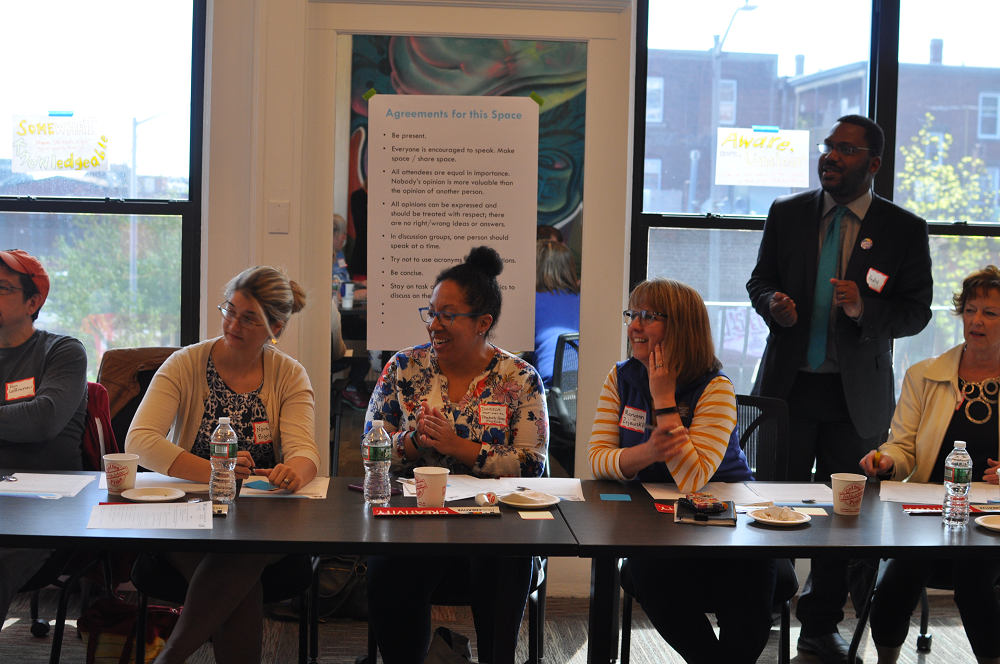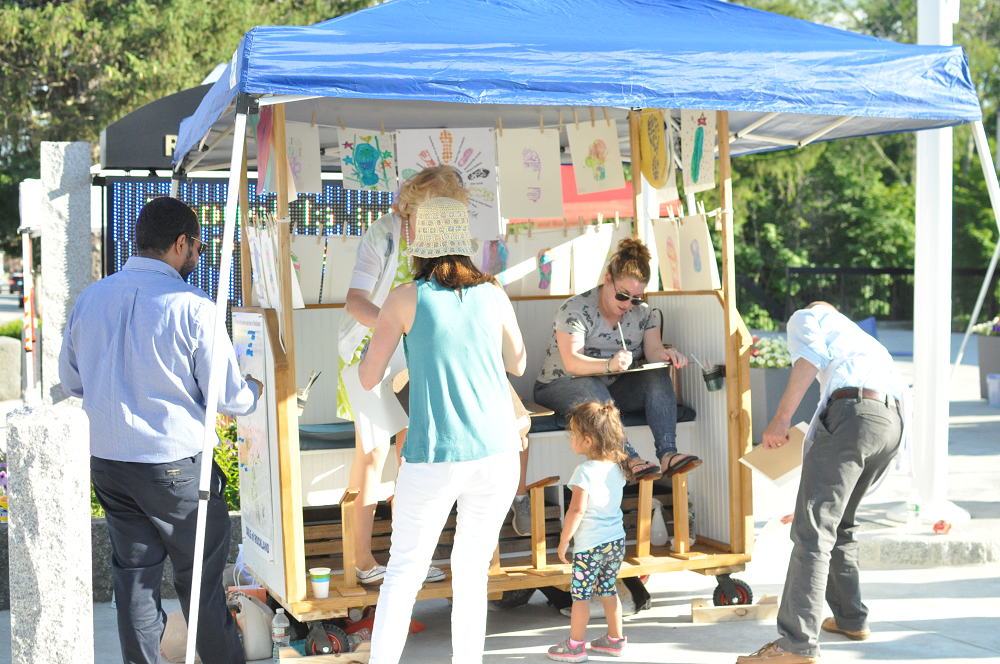Cultivating Fertile Ground for Art & Artists in Planning Agencies
Posted by Jan 24, 2019

Mrs. Jennifer Erickson
This post is part of Animating Democracy’s Inside Artist-Municipal Partnerships blog salon. Check out an upcoming companion blog to this post by artist Carolyn Lewenberg, the first Artist-in Residence at the Metropolitan Area Planning Council (MAPC) (Jan. 25), and another by Josh Silver and Sakina Khan of the DC Office of Planning, Washington, D.C. (posted Jan. 23); plus six others published in 2018.
January 2019 marks two years since I launched the Arts & Culture practice at the Metropolitan Area Planning Council (MAPC), an independent state agency serving the 101 cities and towns in Metropolitan Boston. MAPC has an entrepreneurial and innovative culture for a government agency, and our Arts & Culture practice was conceived and operates in that spirit. We deliver technical assistance in cultural planning, creative placemaking, creative community development, arts and cultural data collection and analysis, and cultural policy. And we have an Artist in Residence who serves MAPC as an agency and works with some of the cities and towns we serve. It has been quite a ride!
The impetus for our launch came from two sources: a desire to implement the arts and cultural priorities in our agency’s MetroFuture regional plan, and my dogged determination since entry into the urban planning field in 2009 to do place-based social justice work that engages arts, culture, and creativity at the core. The project that met the need and the interest was MAPC’s Arts & Planning Toolkit, which launched in 2015 and was the subject of my graduate thesis. The Toolkit presents a menu of strategies grounded in case studies of real projects that exemplify how arts and culture can be an effective component of planning, community development, land use, housing, transportation, economic development, public health, and public safety projects and initiatives. Our Arts & Culture work launched in 2017 with a major investment from a long-time funder, the Barr Foundation, which was excited about the prospect of advancing the practices and strategies outlined in our newly completed Toolkit.

Building political will: Our services have been grounded in an ongoing process of building political will for arts and culture among urban planners and municipal leaders. The Toolkit emerged as a project of the Inner Core subregion of MAPC. The subregion was a space for professional development and networking among municipal planners; it also was a prime space for promoting regional collaboration and seeding regional projects and initiatives. In 2014, I pitched the Toolkit concept to my subregion, and over a dozen municipal staff and state partners rallied around the concept and agreed to serve on an Advisory Group that guided its development and completion. We also received a great accolade: the Toolkit won the 2016 Planning Project Award from the American Planning Association/Massachusetts Chapter—a wonderful endorsement from the planning leadership in Massachusetts.
How we function: Our menu of services includes municipal and regional planning work, research projects, and the delivery of workshops and educational resources that also aim to facilitate relationships between the planning & community development and arts & cultural sectors. Our arts and culture-centered technical assistance is intentionally interdisciplinary and strives to engage a host of planning areas, including: community development, economic development, public health, and the built and natural environment. We currently receive more technical assistance requests than we are able to fund and/or staff!
Milestones: Municipal support and demand for our services has been strong. Milestones include: bringing on a team of cultural planners and artists with research, data, policy, and curatorial chops; undertaking over a half-dozen cultural planning and creative placemaking projects; and offering professional development workshops for over 300 people. Our team was formed to realize the visionary strategies outlined in the Toolkit and, more than that, to facilitate a culture shift within the field of planning in ways that not only infuse arts, culture, and creativity into the traditional disciplines of planning, but also conduct and implement policy and planning projects that can help arts and culture thrive. We are embedded into the agency, work collaboratively with other departments and divisions, and partner with local, regional, and statewide agencies and organizations.

Lessons & Observations: Some lessons/observations about doing arts and cultural work in government:
- The appetite for innovation and creativity in the field of urban planning is strong; this is part of the reason why cultural planning and creative community development practices such as creative placemaking have found fertile ground. These practices bring a more balanced/human focus on people in addition to place—filling a void and helping to upgrade and expand planners’ toolkits for how they can creatively advance their community development responsibilities.
- Many allies for arts and culture can be found in the fields of urban planning and community development. As an artist myself who was attracted to the field because of its potential for driving systems change, I have found that many urban planners maintain a creative life even if they don’t readily embrace “artist” as a core part of their identity. Many others have a strong appetite for engaging creative and innovative approaches into their primary practice area, be it transportation, public health, economic development, or housing.
- Cultural work in government necessitates clarity in values and the ability to acknowledge and identify implicit and explicit values and norms. To do cultural planning and creative placemaking work without this intentionality can reinforce dominant forces of power and privilege and perpetuate racial and cultural inequities.
- Cultural planning and creative community development work within the field of urban planning is culture-shifting social change work. Recognition of this fact also invites an acceptance of the responsibility to connect across sectors, to engage in the constant act of translation to build knowledge and access, and to be accountable to the arts and cultural sector. Done well, this work can transform people and place.





